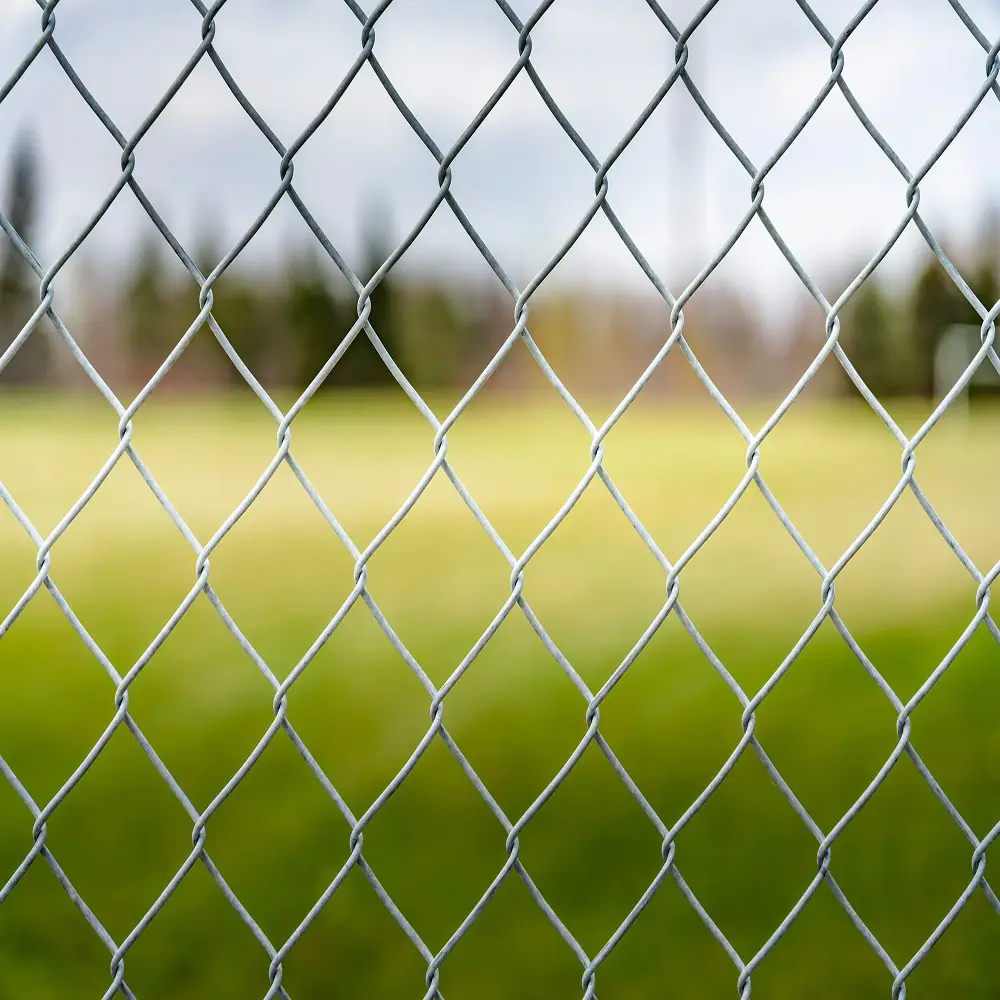How to Maintain a Chain-Link Fence – Expert Tips from Evo Grass Fence
A chain-link fence is a practical, durable, and cost-effective solution for securing properties, whether residential, commercial, or industrial. However, like any outdoor feature, a chain-link fence requires some basic maintenance to keep it looking its best and functioning properly. At Evo Grass Fence, we believe that regular maintenance can help extend the lifespan of your chain-link fence, ensuring it continues to provide security and value for many years. In this blog, we’ll share expert tips on how to maintain a chain-link fence effectively.
1. Regular Inspection
The first step in maintaining your chain-link fence is conducting regular inspections. It’s important to check the fence periodically for any signs of wear or damage. Regular inspections can help you catch small issues before they become more significant problems.
- Check for Rust: Over time, metal parts of the fence may develop rust, especially if the fence is exposed to harsh weather. Inspect the steel posts, mesh, and bottom rails for any rust spots.
- Examine the Posts and Wiring: Make sure the posts are standing firm and aren’t leaning or corroding. Look for loose wires or areas where the chain-link mesh might be sagging.
- Tighten the Fence: If the chain-link mesh begins to sag or become loose, check the tension and tighten the fence where necessary to keep it taut.
2. Cleaning Your Chain-Link Fence
Cleaning your chain-link fence is crucial for maintaining its appearance and preventing damage caused by dirt, debris, or environmental factors. At Evo Grass Fence, we recommend the following cleaning routine:
- Wash the Fence: Use a garden hose or pressure washer to remove dirt, dust, and debris that can accumulate over time. If you’re using a pressure washer, make sure to use a low setting to avoid damaging the mesh.
- Use Soap and Water: For stubborn stains or dirt, mix a solution of mild soap and water. Use a soft brush or cloth to scrub the affected areas. Avoid using harsh chemicals that could damage the fence or surrounding plants.
- Clean the Bottom Rail: Don’t forget to clean the bottom rail and any areas where dirt or grass may have built up. Use a broom or small rake to remove any debris from the ground near the fence.
3. Rust Prevention and Treatment
One of the most common issues with chain-link fences is rust, particularly if the fence is made of uncoated steel. Rust can weaken the fence and compromise its effectiveness. Here are some steps you can take to prevent and treat rust:
- Galvanized Chain-Link Fences: If your fence is made from galvanized steel, it’s already treated to resist rust. However, it’s still a good idea to inspect it regularly and reapply protective coatings if you notice signs of rust.
- Vinyl-Coated Fences: Vinyl-coated chain-link fences are resistant to rust, but the coating can wear down over time. If you spot any chips or scratches in the coating, touch them up with matching vinyl paint to prevent rust from forming.
- Rust Removal: If rust does appear, use a wire brush or sandpaper to scrub away the rust. After cleaning the area, apply a rust-resistant primer or paint designed for metal surfaces to protect the fence from further damage.
4. Repairing and Replacing Damaged Sections
If you notice that sections of your chain-link fence are damaged or have been compromised, it’s important to repair or replace them promptly. Neglecting damaged sections can reduce the overall effectiveness of the fence and may lead to more serious issues down the line.
- Fixing Loose Links: If the chain-link mesh becomes loose or detached, you can reattach it using wire ties or by tightening the existing fence material. This is an easy fix that can be done on your own.
- Replacing Damaged Sections: If a portion of your fence is bent, broken, or severely rusted, it may need to be replaced. Evo Grass Fence can provide replacement mesh and parts to help you restore the integrity of your fence.
- Repairing Posts: If the posts become loose or corroded, they may need to be reset in concrete or replaced. A professional from Evo Grass Fence can assist with ensuring your posts remain secure.
5. Maintaining Fence Accessories
In addition to the fence itself, accessories like gates and locks require maintenance to function properly. Here’s how to maintain these components:
- Clean and Lubricate Gates: Over time, the hinges and latches on your gate may become rusty or stiff. Clean them with soap and water, and then lubricate with an appropriate oil or grease to keep them functioning smoothly.
- Inspect the Lock: If you have a lock on your chain-link gate, check it regularly to ensure it’s working properly. Lubricate the lock mechanism to prevent it from seizing up.
6. Landscaping Around Your Fence
Your fence is part of the overall landscape, and maintaining the area around it can help prevent damage and improve the overall look of your property.
- Trim Plants: Keep plants, vines, or shrubs from growing over the fence, as this can cause damage to the mesh and may lead to rust in areas with trapped moisture.
- Remove Weeds: Weeds that grow near or along the fence can get tangled in the mesh and may weaken the structure. Regularly remove weeds to keep the fence clear.
7. Professional Maintenance and Installation Services from Evo Grass Fence
At Evo Grass Fence, we understand that proper maintenance can be time-consuming, and some repairs may require professional attention. If you’re looking for expert assistance to maintain or repair your chain-link fence, our team is here to help. We offer professional installation and maintenance services, ensuring your fence remains in optimal condition year-round.


